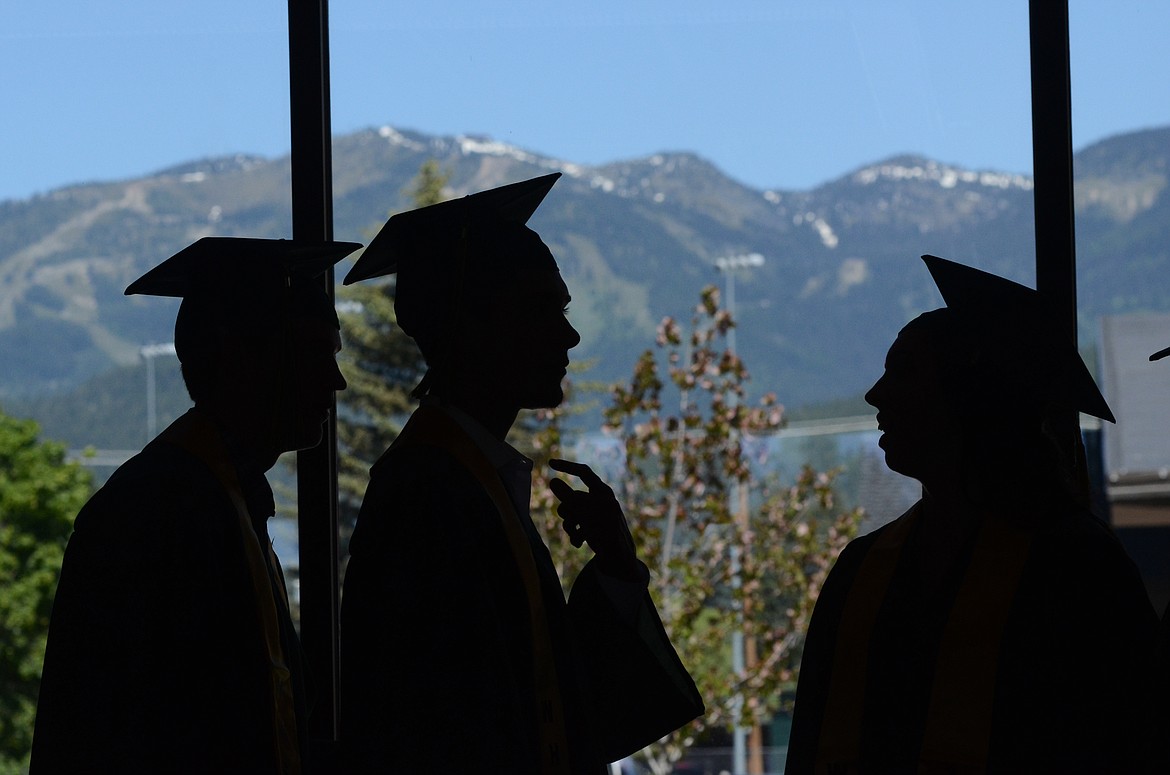Test scores show local students on par with state
Most Flathead Valley high schools are doing better, or comparable to the rest of the state, in the percentage of juniors who are college-ready, according to ACT results released by the Montana Office of Public Instruction.
In 2019, 9,570 juniors took the ACT, which represents about 95% participation statewide.
Montana is among 14 states that uses the nationally recognized ACT as the statewide assessment given to high school juniors for federal reporting and accountability purposes.
Historically, the college entrance exam was taken by college-bound juniors and seniors.
The standardized test quizzes students in four subjects: English, math, reading and science. Scores indicate success in corresponding first-year college-level courses — English composition, algebra, social science and biology.
A set benchmark in each subject reflects the minimum score needed to “indicate a 50 percent chance of getting a ‘B’ or higher or about a 75% chance of obtaining a ‘C’ or higher” according to www.act.org.
English is the subject where more Montana students indicated readiness, followed by reading, math and science.
Results show 49.8% of Montana juniors are prepared for college-level English courses; 33.9% in math, 36.6% in reading and 28.7% in science.
In the valley’s largest high schools, 345 students tested at Flathead High School and 304 at Glacier High School in 2019.
Glacier surpassed the state in meeting or exceeding benchmarks in each subject in 2019. In English, 53% of students indicate readiness; in math, 36.8%; in reading, 45.4% and science 35.2%.
Flathead’s results were slightly lower than the state’s. In English, 48.4% indicate readiness; in math, 32.8%; in reading 35.7% and science, 27%.
Columbia Falls High School had 137 students take the test. The percentage of students meeting or exceeding college-readiness benchmarks fell below the state in each subject. In English, 45.3% indicate readiness; in math, 28.5%; reading, 35% and science, 25.6%.
Whitefish High School tested 123 students this year and surpassed the state in the percentage of students meeting or exceeding the four benchmarks. In English, 69.9% indicate readiness; math, 52.9%; reading, 55.3% and science 46.3%.
The valley’s smallest public high school, Bigfork, tested 74 students. The percentage of students meeting or exceeding benchmarks surpassed the state in all but one subject, math. In English, 55.4% indicate readiness; in math, 31.1%; reading 41.9% and science, 29.7%.
Schools and students also received composite scores. A composite score takes into account the average scores in each subject. Individual subject-area scores and the composite are measured on a 1 (lowest) to 36 (highest) scale.
The overall state composite score remained unchanged from 2018 to 2019 at 19.6.
The Montana University System requires a composite score of 22 as one of the admissions criteria for its four-year campuses. About 32.4% of Montana juniors scored 22 or better. Around 45.9% scored a 20 or better, which qualifies them for the governor’s Best and Brightest scholarship.
Glacier had a higher average composite score than the state at 20.4, which is also an improvement from last year’s score of 20.2.
Flathead’s average composite score fell below the state at 19.3. This is a decrease from the 2018 score of 19.5.
Columbia Falls’ average composite score was also 19.3. Although the score falls below the state’s, it is an improvement from last year’s score of 19.1.
Whitefish surpassed the state with an average composite score of 21.9, which is an increase from the 2018 score of 20.2.
Bigfork had an average composite score of 19.8. Although scoring above the state, the score is a decrease from the 2018 score of 20.4.
“These ACT results show that Montana has work to do in preparing our students for success in college and careers, especially in the critical areas of math and English language arts,” Montana Office of Public Instruction Superintendent Elsie Arntzen said in a press release. “While one test is not an indicator of a student’s full potential and not all students need to go to college to find a career, Montana must prepare the next generation for success after they graduate high school.”
Reporter Hilary Matheson may be reached at 758-4431 or hmatheson@dailyinterlake.com.


